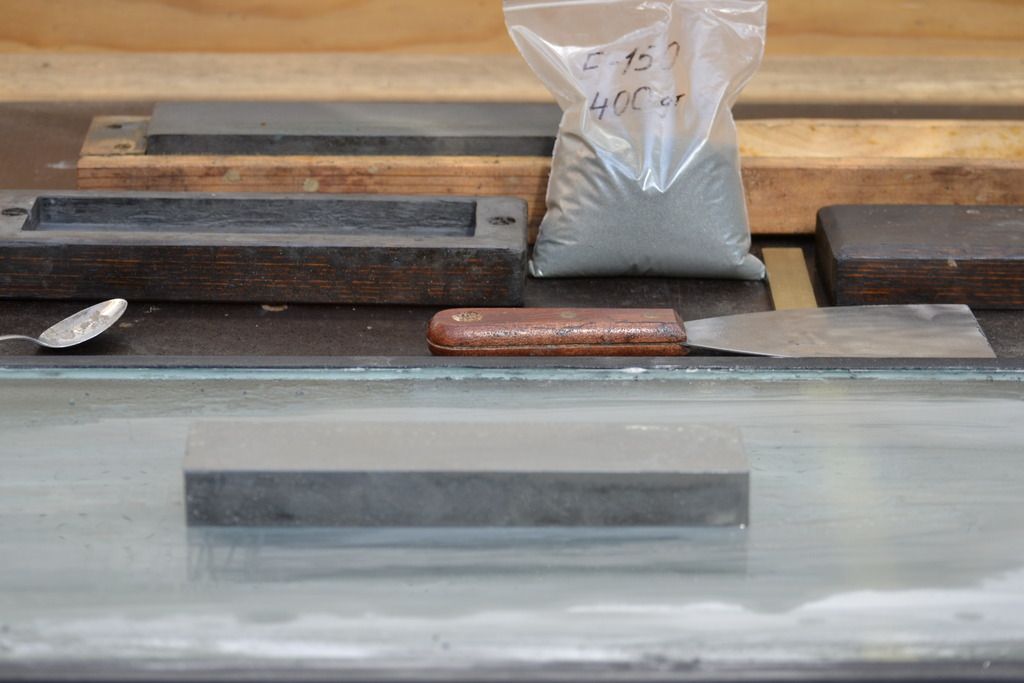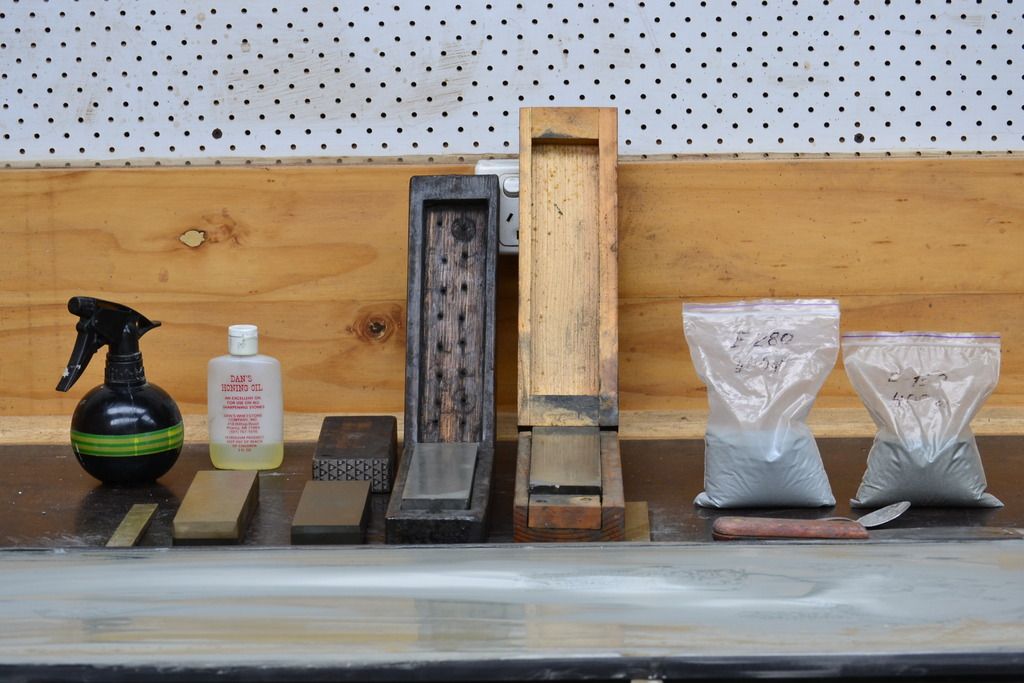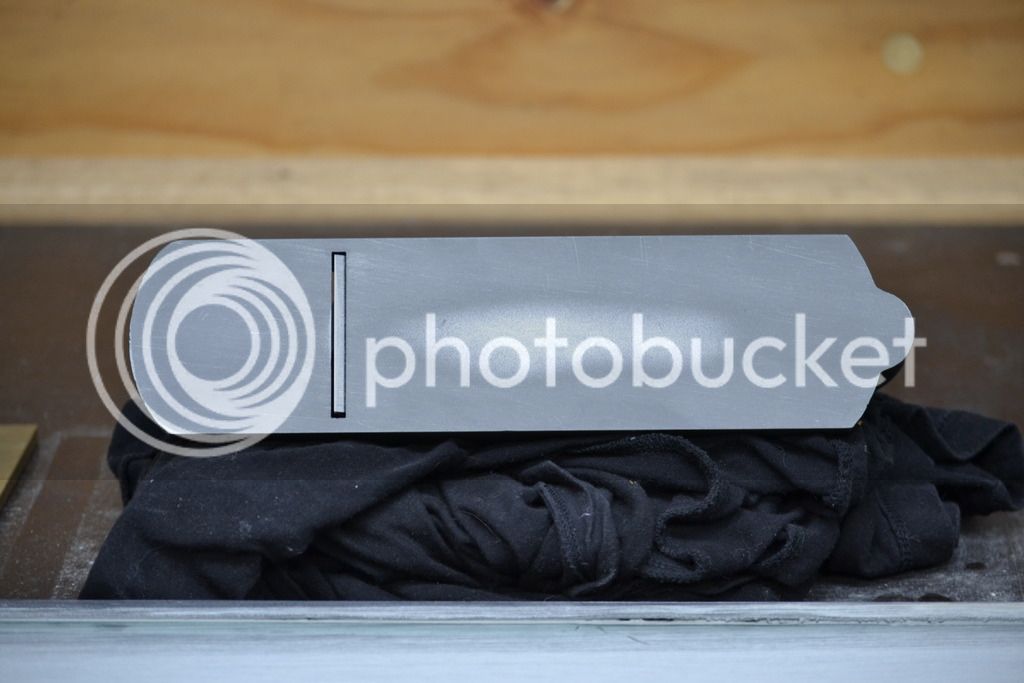I got the previously mentioned group of 8 stones (which included 5 bench stones), as well as a carborundum 118, which is a fine stone, but not quite as fine as the 118S.
The coarse stones do that they do in norton crystolon, they cut fast and leave deep scratches.
I figured that maybe the finer side of the combination hones or the 118 would prove to be usable, and I guess they are, but they are still friable, oil goes right through them, the swarf that includes grit is like sand and even on the 118, the little contaminating grit gets everywhere, and then it's on your strop, etc.
Washita is far better. India, too. You could use the carborundum stones if you had to and you had some metal polish to clean up their work, but no great reason to. The gets-all-over-the-place grit coming off of the stones is the biggest disappointment, though - it doesn't happen with india stones.
The coarse stones do that they do in norton crystolon, they cut fast and leave deep scratches.
I figured that maybe the finer side of the combination hones or the 118 would prove to be usable, and I guess they are, but they are still friable, oil goes right through them, the swarf that includes grit is like sand and even on the 118, the little contaminating grit gets everywhere, and then it's on your strop, etc.
Washita is far better. India, too. You could use the carborundum stones if you had to and you had some metal polish to clean up their work, but no great reason to. The gets-all-over-the-place grit coming off of the stones is the biggest disappointment, though - it doesn't happen with india stones.




































